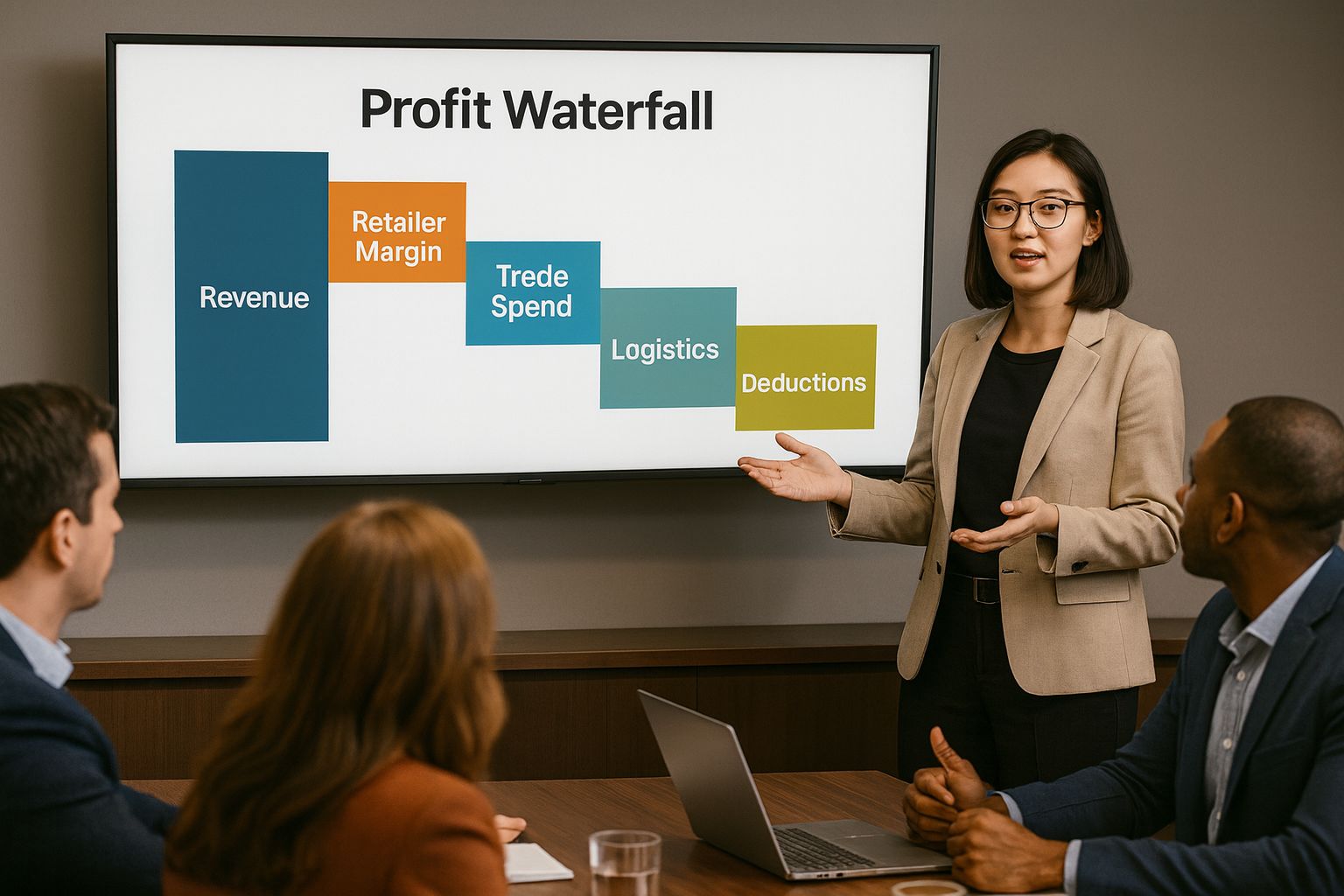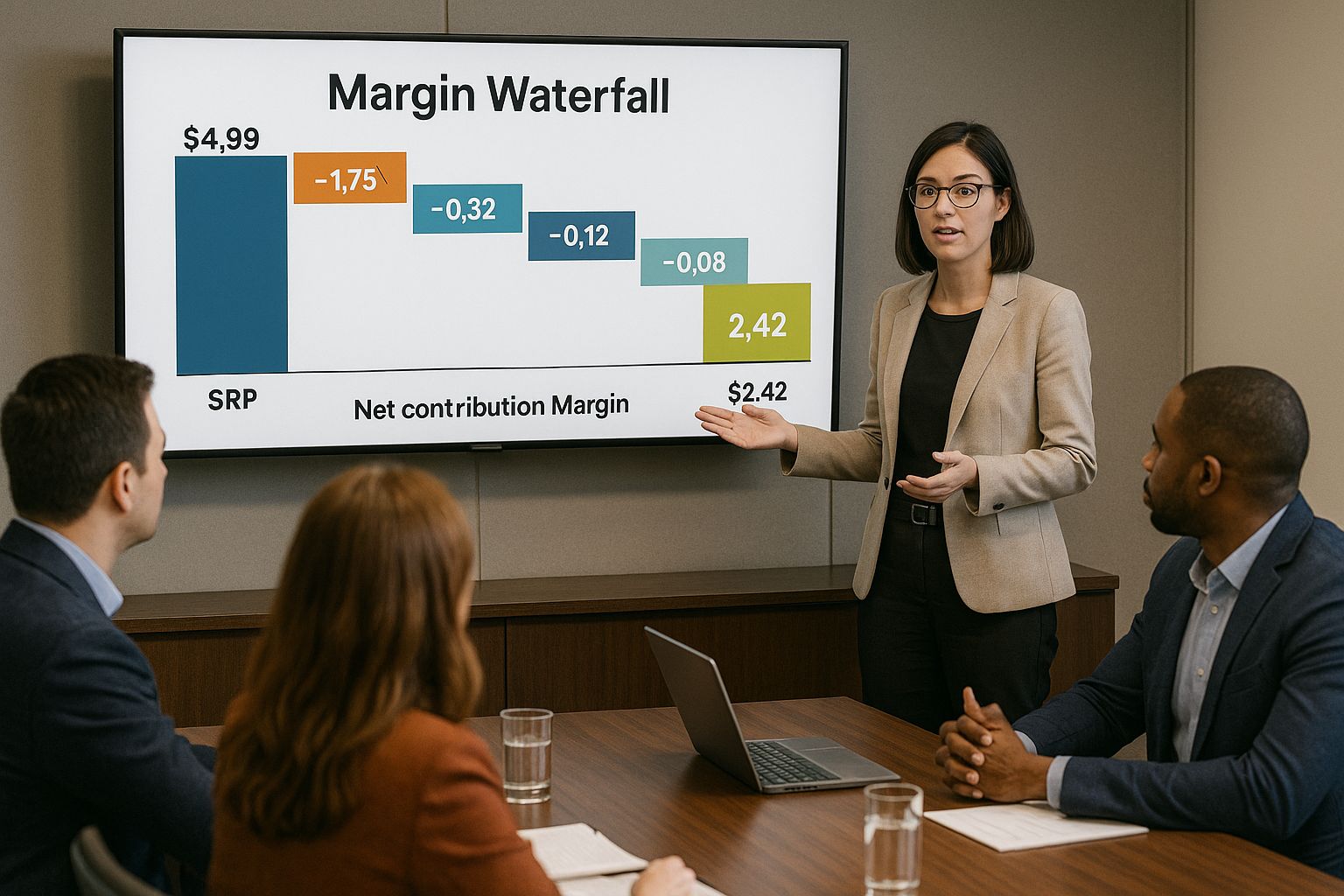
Landing a retail deal feels like winning the game - until you realize the game has extra innings. Many brands underestimate the full cost of retail distribution. These aren’t just the obvious expenses like production and freight. They’re the deductions, billbacks, and fees that quietly chip away at margins after your product hits the shelf. These “hidden” costs aren’t truly invisible, but they’re often ignored until they’ve eaten through profitability. Planning for them upfront is essential if you want to maintain a healthy bottom line.
What hidden costs really are
Hidden costs in retail distribution are simply costs you didn’t model early enough to adjust pricing or strategy. They’re often clearly stated in contracts or retailer portals, but only become real when they show up as unexpected deductions on an invoice. They generally fall into categories such as trade programs, access fees, compliance penalties, logistics surcharges, and operational costs. For example, onboarding fees, scan event charges, or penalties for not meeting an “on-time, in-full” (OTIF) delivery requirement are common. If you haven’t built these into your forecast, your margin takes the hit.
Common costs you should expect
Consider slotting or onboarding fees - charges you pay to secure shelf space or list a new SKU. Some retailers also expect “free fills” or introductory allowances, where you supply initial stock at no charge to seed the shelf. Beyond that, you may face promotional deductions for events like temporary price reductions (TPRs), buy-one-get-one (BOGO) offers, and digital features. On the operations side, there are recurring costs for warehousing, pick-and-pack fees, and administrative expenses like EDI setup and GS1 barcode maintenance.
Compliance-related costs can sting even more. Chargebacks for mislabeled cases, short shipments, or missed delivery windows are common, and some retailers have stringent automated systems that flag - and fine -instantly. Add to that the “soft” costs like cash flow gaps caused by long payment terms, and you start to see how the true cost of retail is far higher than the price-to-retailer figure on your sales sheet.
How to plan for them before you commit

The best way to avoid margin surprises is to build a channel-specific margin waterfall before you agree to any terms. This means mapping your revenue from the top (SRP) down through every deduction, fee, and operational expense until you see your net contribution margin. Price-pack architecture should be part of that exercise; even a minor change in unit count or package size can protect valuable cents per unit.
Setting trade guardrails is another safeguard. Decide your maximum allowable trade spend percentage and stick to it. If a retailer asks for an event that would push you over, either adjust the event or pass on it. Pair this with a compliance checklist - ensuring that labeling, case pack configurations, pallet patterns, and EDI processes are tested before your first purchase order - to avoid preventable chargebacks.
Cash flow modeling is equally important. Layer in production lead times, safety stock needs, retailer payment terms, and any financing costs you might incur to bridge the gap between producing the product and receiving payment. Finally, run scenario testing for best, base, and worst-case velocities and deduction rates. If your worst-case scenario still covers costs, you’re on safer ground.
Planning tips that protect your margin
While no two brands have the same cost structure, certain best practices can apply broadly. Promote with purpose - fewer, better promotions often deliver stronger ROI than constant discounting. Engineer your packaging and case configuration to reduce damage and handling fees. Ship full pallets whenever possible to lower freight costs. And track not just sales, but velocity per store per week, net revenue after trade spend, and deduction rates. These metrics are the early warning system for margin erosion.
Distribution readiness checklist
Copy this into your plan and mark it off before your first PO is cut.
☐ Margin waterfall built per retailer, per pack
☐ Target SRP and price-pack architecture approved
☐ Trade budget set with guardrails and promo calendar
☐ Freight quotes, accessorials, and 3PL fees confirmed in writing
☐ EDI and ASN tested end-to-end, portal access verified
☐ GS1 barcodes, labels, case packs, pallet configs approved
☐ Compliance checklist complete, chargeback prevention steps documented
☐ Returns and reverse logistics process defined
☐ Deductions tracking workflow in place, owner assigned
☐ Cash flow model built with terms and production lead times
☐ Broker or field sales economics modeled and contracted
☐ Regional pilot plan and scale criteria defined
Keep your margin, fund your growth | Let’s plan it
If you want to make sure your retail distribution model starts strong, we can help you adapt this checklist to your specific product, retailer, and market.
Want to keep learning? Discover more here, where we delve into other key aspects of the puzzle.